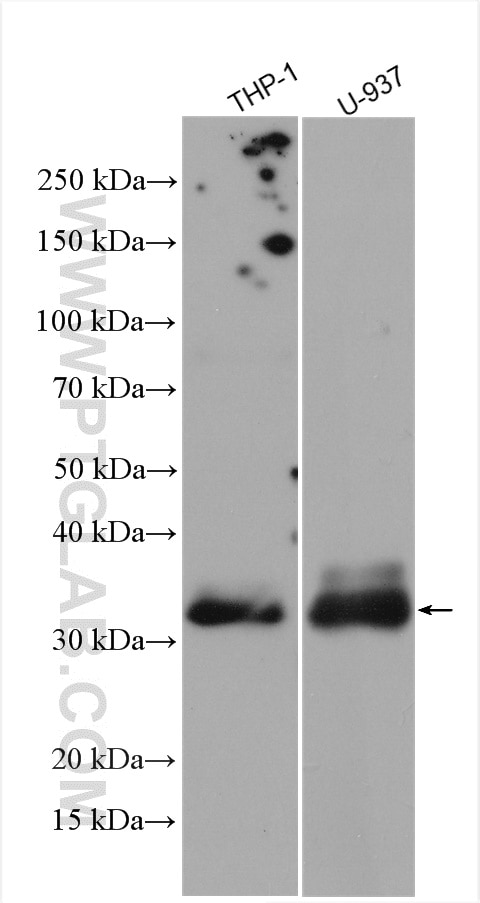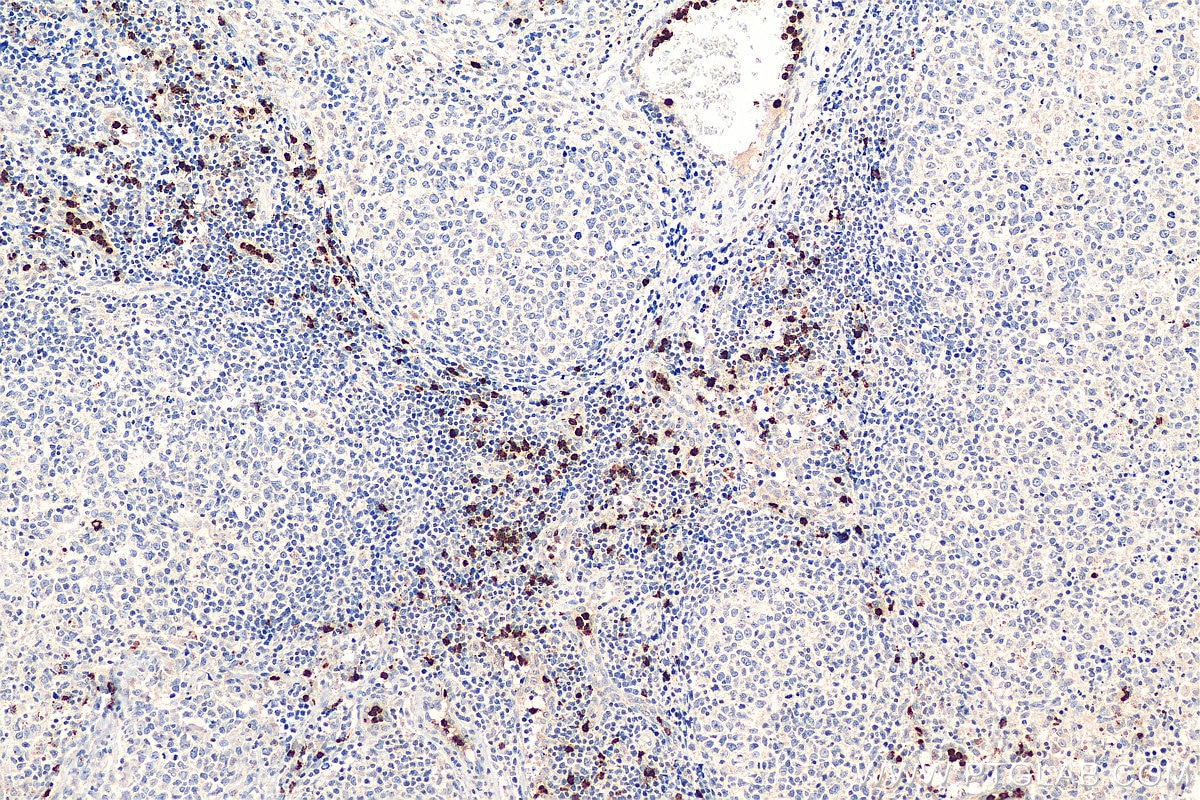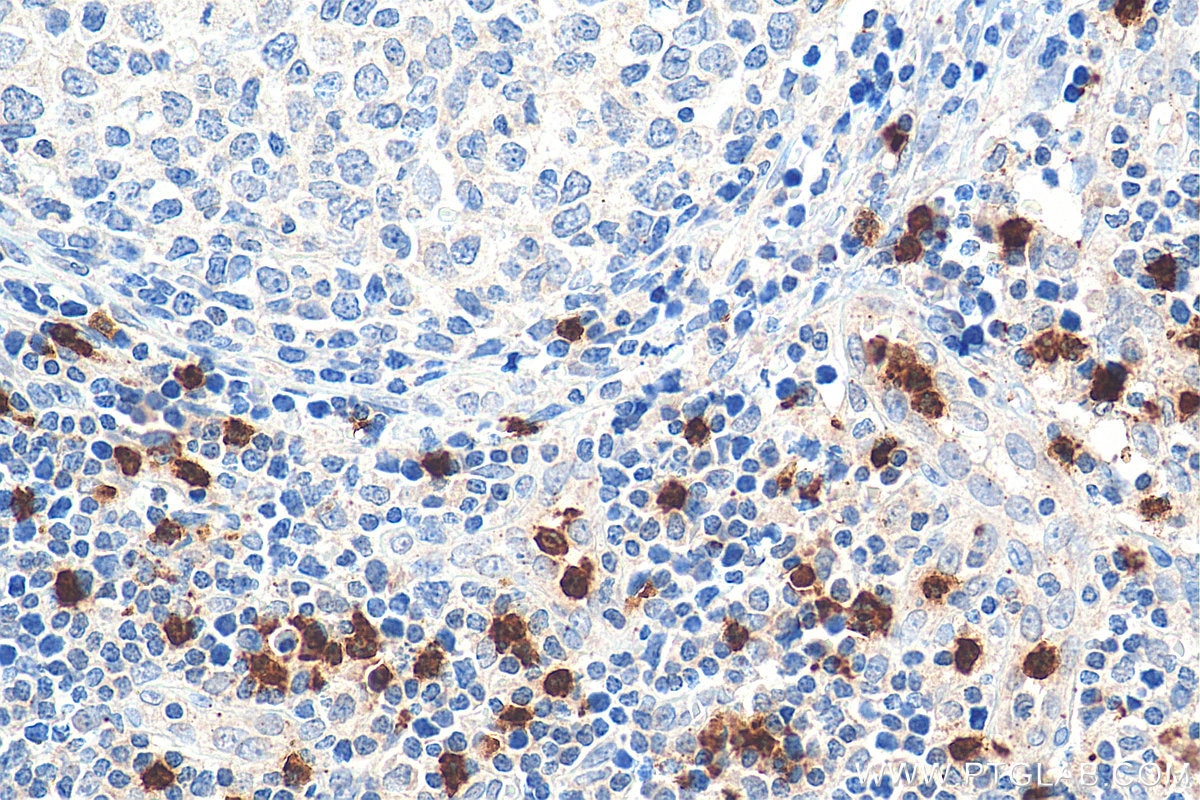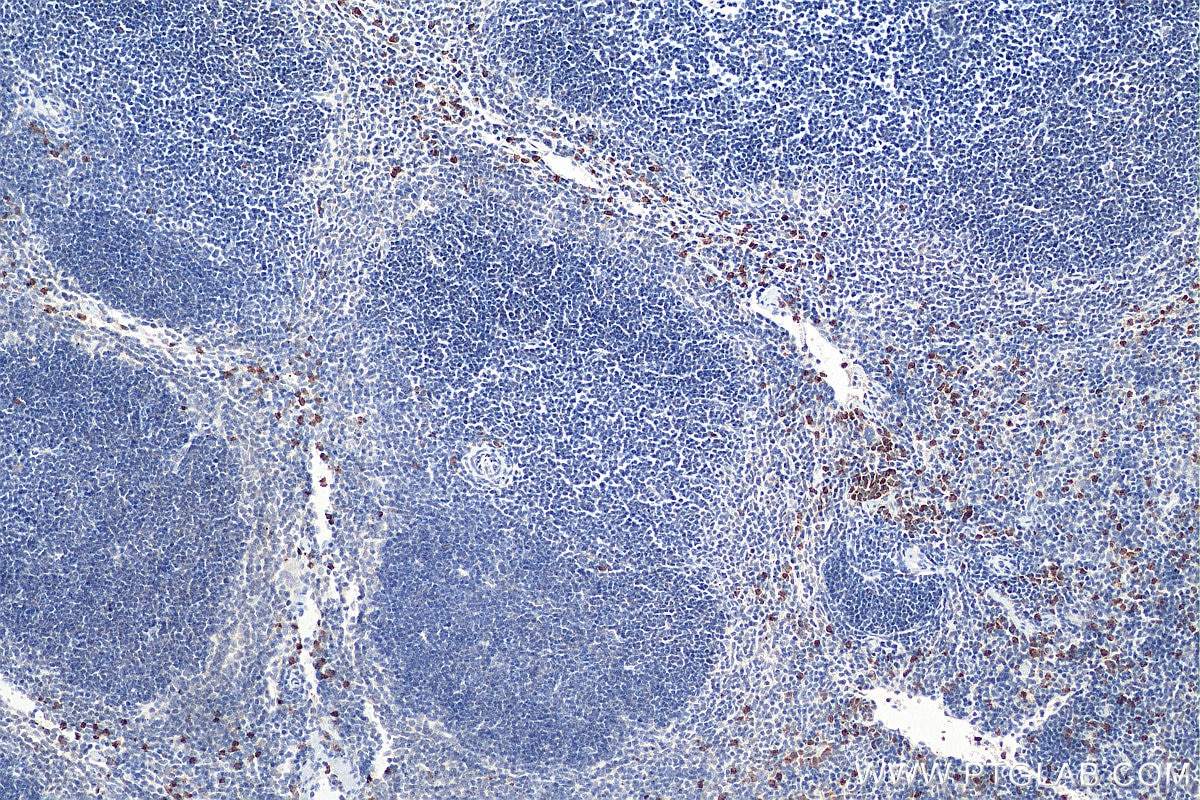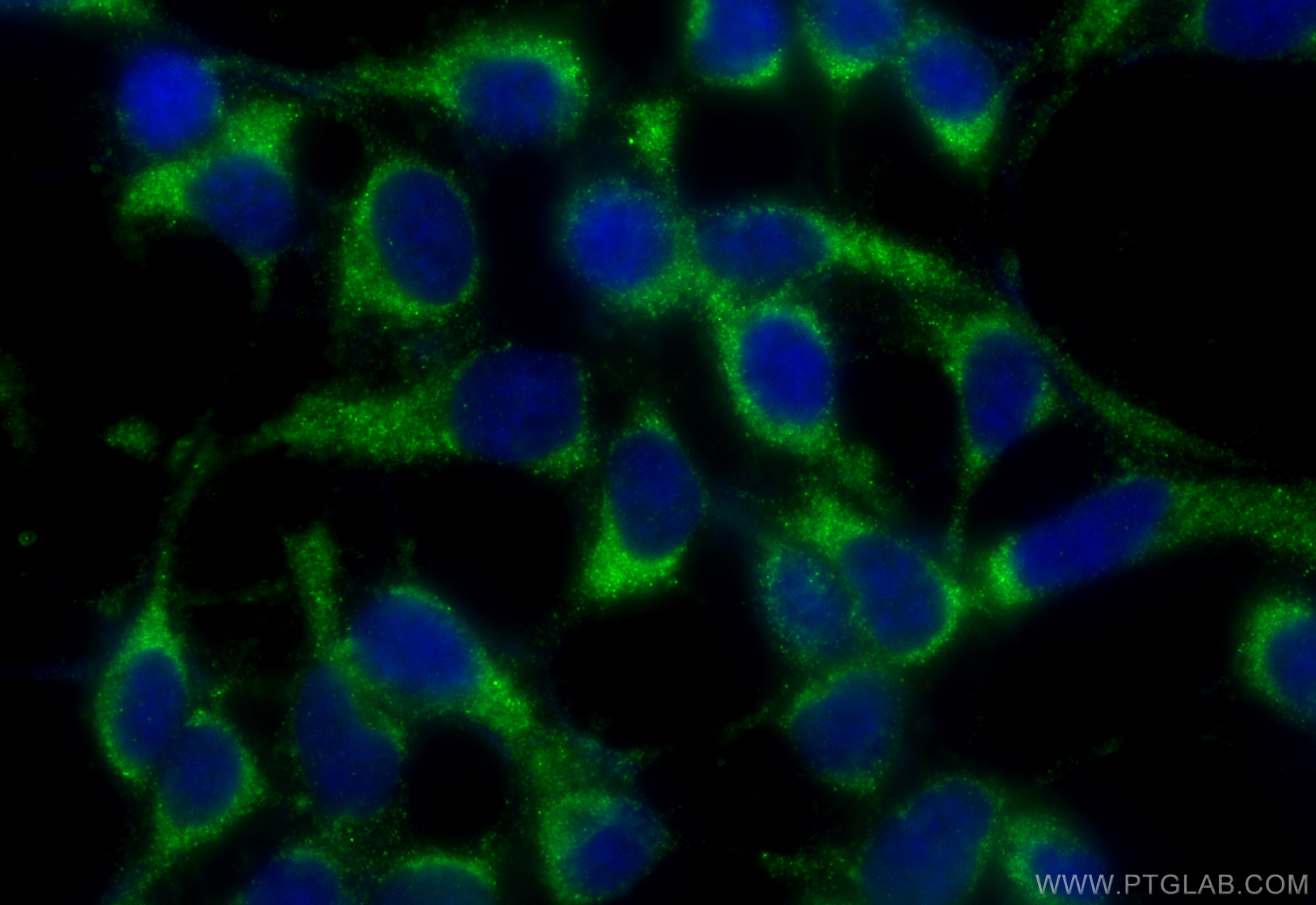Anticorps Polyclonal de lapin anti-Neutrophil Elastase
Neutrophil Elastase Polyclonal Antibody for WB, IHC, IF/ICC, ELISA
Hôte / Isotype
Lapin / IgG
Réactivité testée
Humain, souris et plus (2)
Applications
WB, IHC, IF/ICC, ELISA
Conjugaison
Non conjugué
N° de cat : 27642-1-AP
Synonymes
Galerie de données de validation
Applications testées
| Résultats positifs en WB | cellules THP-1, cellules U-937 |
| Résultats positifs en IHC | tissu de lymphome humain, tissu splénique de souris il est suggéré de démasquer l'antigène avec un tampon de TE buffer pH 9.0; (*) À défaut, 'le démasquage de l'antigène peut être 'effectué avec un tampon citrate pH 6,0. |
| Résultats positifs en IF/ICC | cellules HEK-293, |
Dilution recommandée
| Application | Dilution |
|---|---|
| Western Blot (WB) | WB : 1:500-1:1000 |
| Immunohistochimie (IHC) | IHC : 1:50-1:500 |
| Immunofluorescence (IF)/ICC | IF/ICC : 1:50-1:500 |
| It is recommended that this reagent should be titrated in each testing system to obtain optimal results. | |
| Sample-dependent, check data in validation data gallery | |
Applications publiées
| WB | See 6 publications below |
| IHC | See 4 publications below |
| IF | See 3 publications below |
Informations sur le produit
27642-1-AP cible Neutrophil Elastase dans les applications de WB, IHC, IF/ICC, ELISA et montre une réactivité avec des échantillons Humain, souris
| Réactivité | Humain, souris |
| Réactivité citée | rat, bovin, Humain, souris |
| Hôte / Isotype | Lapin / IgG |
| Clonalité | Polyclonal |
| Type | Anticorps |
| Immunogène | Neutrophil Elastase Protéine recombinante Ag26634 |
| Nom complet | elastase 2, neutrophil |
| Masse moléculaire calculée | 267 aa, 29 kDa |
| Poids moléculaire observé | 29 kDa |
| Numéro d’acquisition GenBank | BC074816 |
| Symbole du gène | ELA2 |
| Identification du gène (NCBI) | 1991 |
| Conjugaison | Non conjugué |
| Forme | Liquide |
| Méthode de purification | Purification par affinité contre l'antigène |
| Tampon de stockage | PBS with 0.02% sodium azide and 50% glycerol |
| Conditions de stockage | Stocker à -20°C. Stable pendant un an après l'expédition. L'aliquotage n'est pas nécessaire pour le stockage à -20oC Les 20ul contiennent 0,1% de BSA. |
Informations générales
ELA2(Neutrophil elastase) is also named as ELAL, NE, HLE, HNE, PMN-E, SERP1, GE, ELANE and belongs to the peptidase S1 family. It is a 33-kDa enzyme with several isoforms that differ in their extent of glycosylation(PMID:12223222). Human neutrophil elastase (HNE) is a serine protease with potent proteolytic activity (3), which is reported to cause mucin secretion (degranulation)(PMID:12169572). It may contribute to the directed migration of leukocytes into flamed postcapillary venules in addition to contributing to the process of tissue emigration(PMID:9683424). The full length protein has a signal peptide,propeptide and three glycosylation sites.
Protocole
| Product Specific Protocols | |
|---|---|
| WB protocol for Neutrophil Elastase antibody 27642-1-AP | Download protocol |
| IHC protocol for Neutrophil Elastase antibody 27642-1-AP | Download protocol |
| IF protocol for Neutrophil Elastase antibody 27642-1-AP | Download protocol |
| Standard Protocols | |
|---|---|
| Click here to view our Standard Protocols |
Publications
| Species | Application | Title |
|---|---|---|
Cell Mol Biol Lett Obacunone alleviates ferroptosis during lipopolysaccharide-induced acute lung injury by upregulating Nrf2-dependent antioxidant responses. | ||
Animals (Basel) Effects of Hormone, NEFA and SCFA on the Migration of Neutrophils and the Formation of Neutrophil Extracellular Traps in Dairy Cows. | ||
Cancer Immunol Res Tumor cell-derived microparticles induced by methotrexate augment T-cell antitumor responses by down-regulating expression of PD-1 in neutrophils | ||
Front Pharmacol RNA-sequencing approach for exploring the protective mechanisms of dexmedetomidine on pancreatic injury in severe acute pancreatitis | ||
Int Immunopharmacol Neutrophil extracellular traps and neutrophil extracellular traps-related genes are involved in new-onset atrial fibrillation in LPS-induced sepsis | ||
bioRxiv Extracellular Vesicle-Associated Neutrophil Elastase Activates Hepatic Stellate Cells and Promotes Liver Fibrogenesis via ERK1/2 Pathway |
